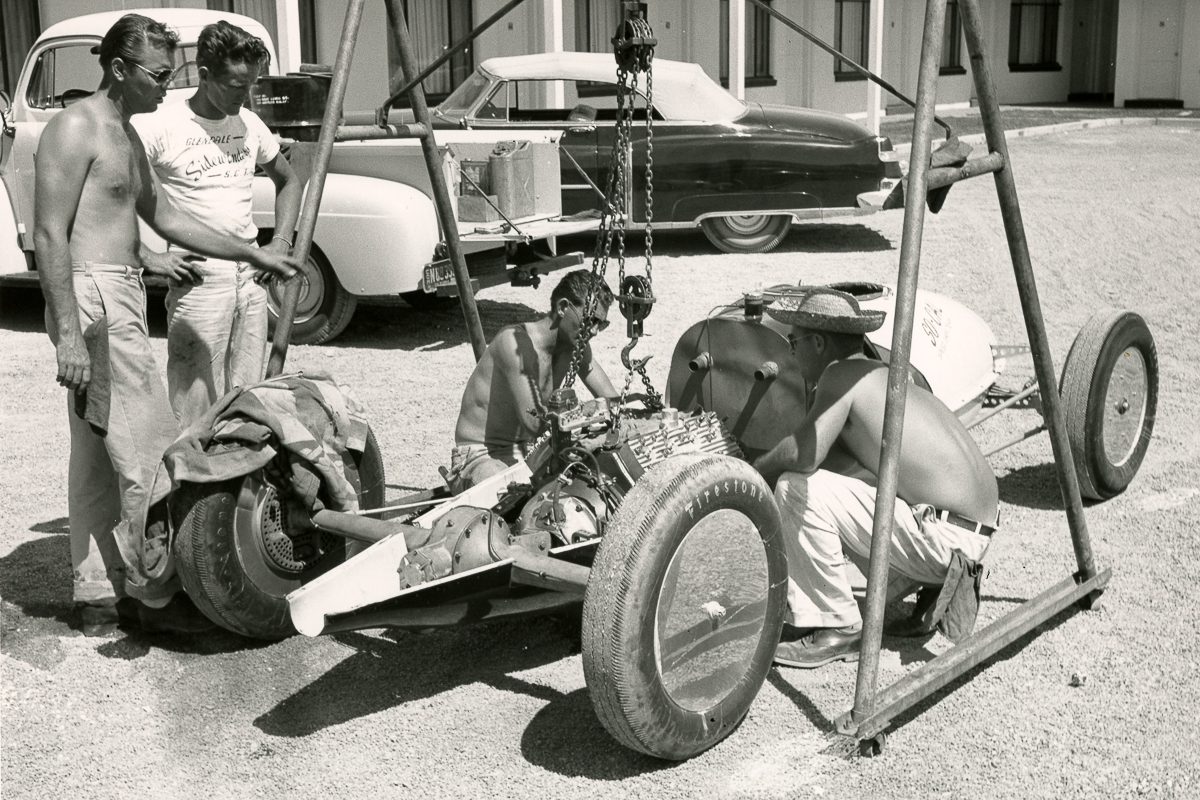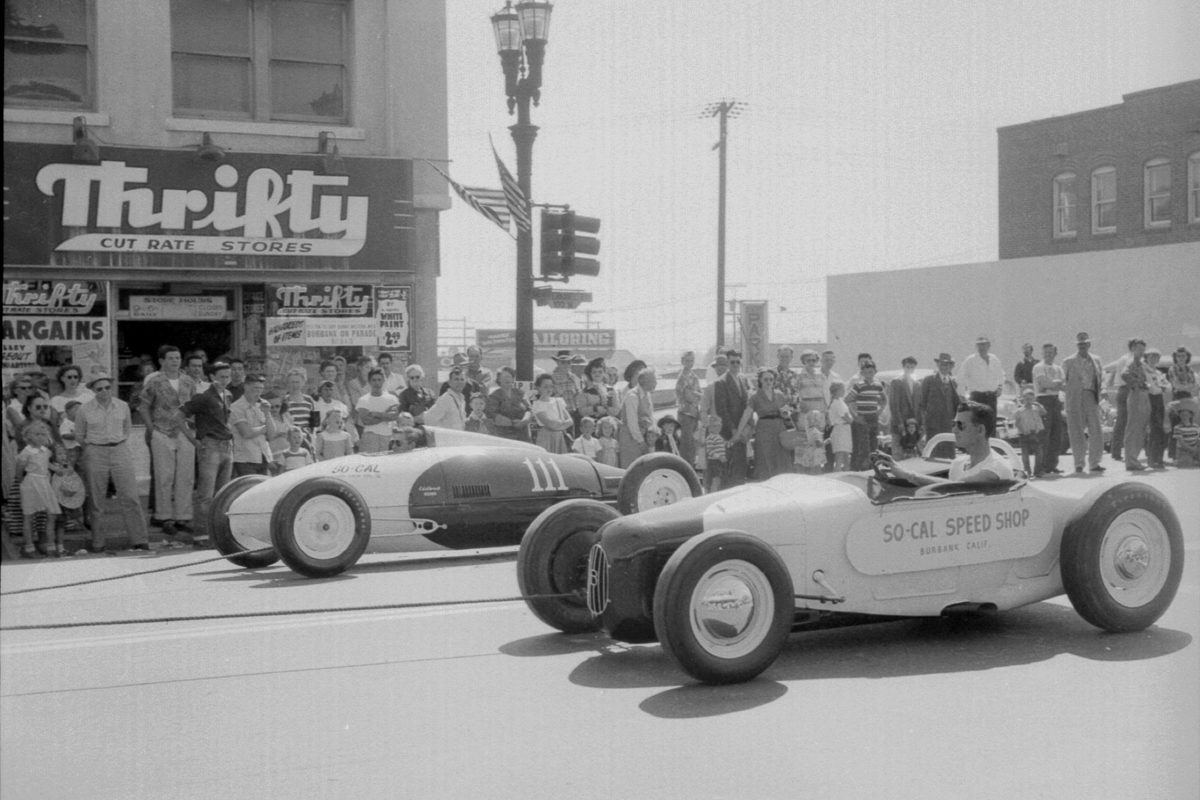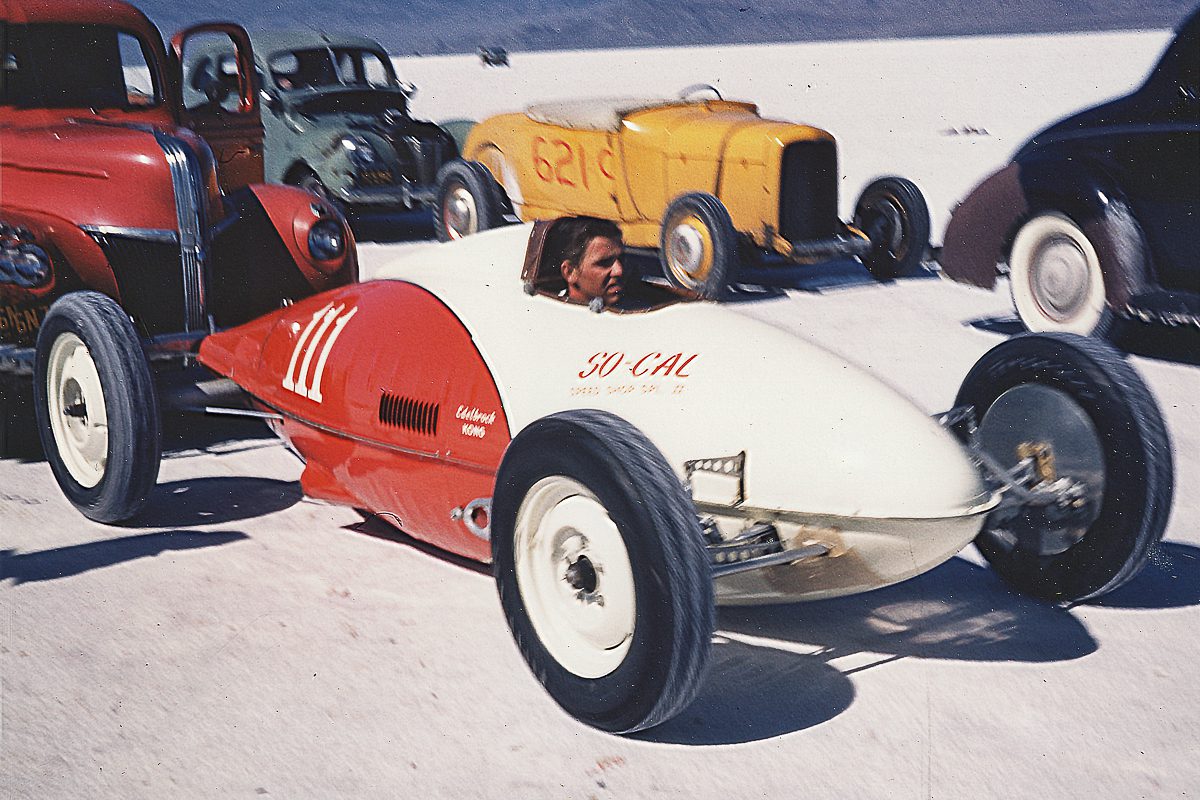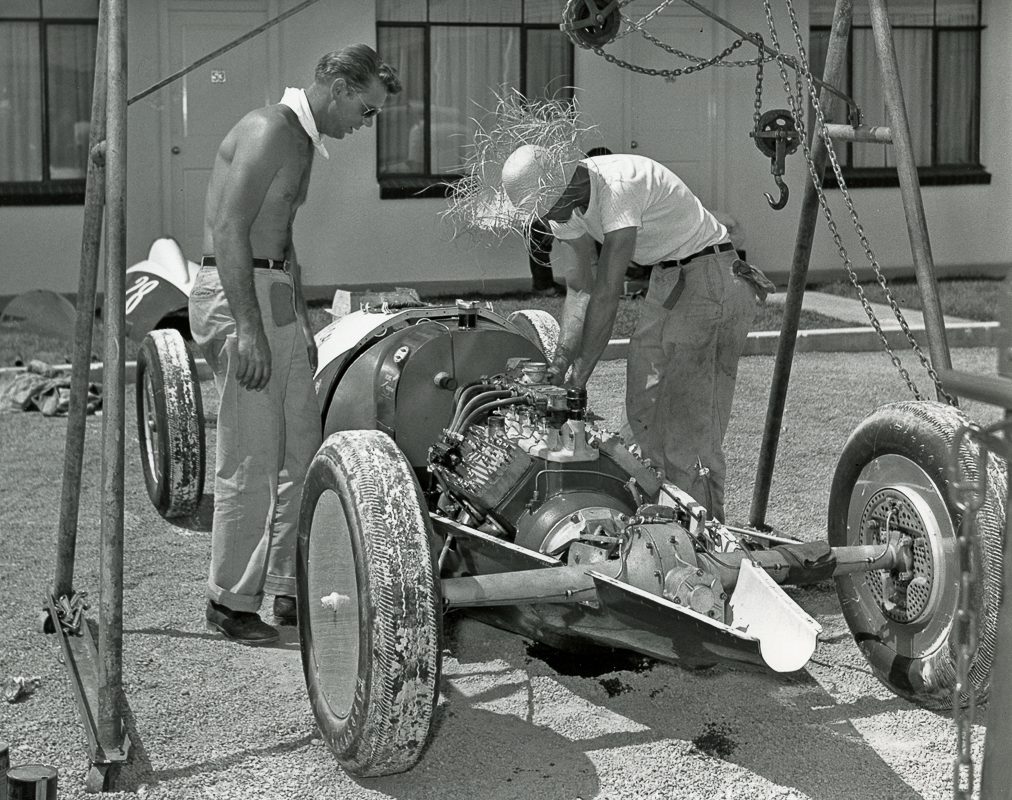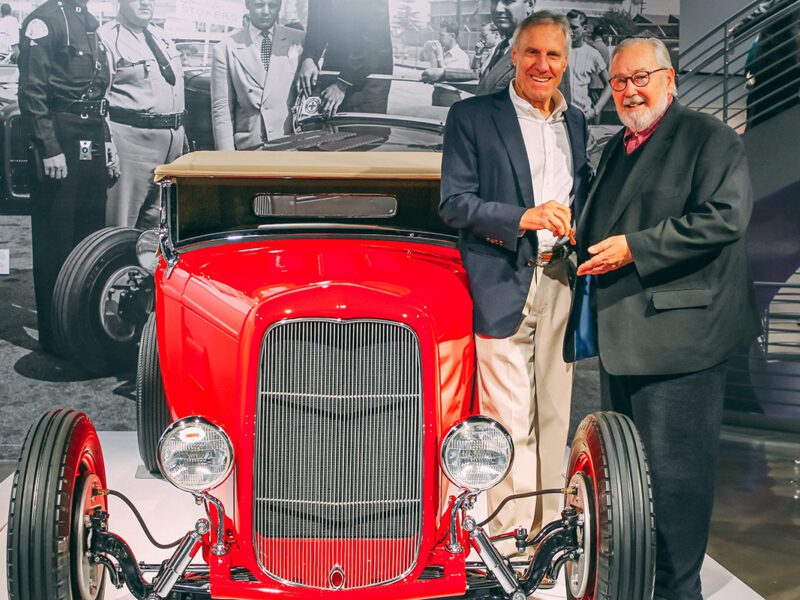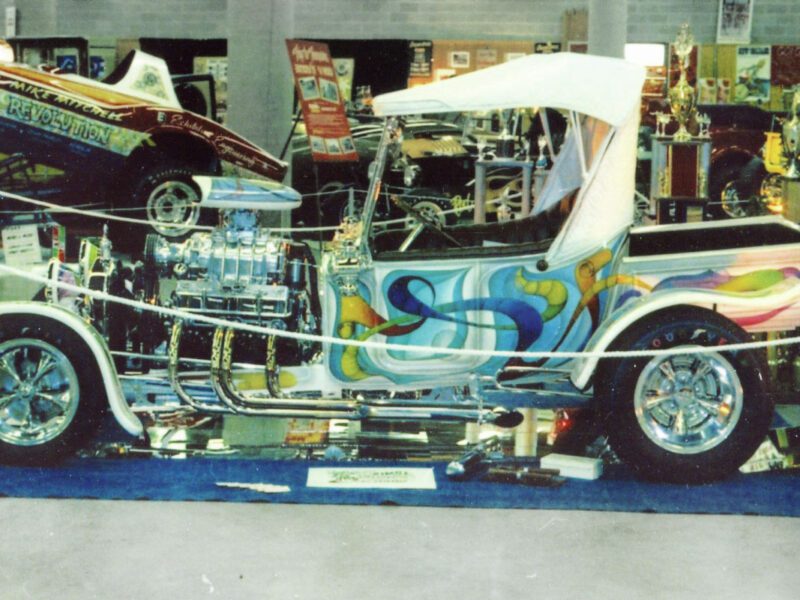Tank Tale – The Iconic Alex Xydias So-Cal Speed Shop Lakester
World War II G.I.s were a resourceful, forward-thinking lot. For enlisted men who had an interest in race cars prior to the war, scouting military hardware for goodies that might boost automotive performance became a sideline pursuit.
One such G.I. was Bill Burke. While on active duty in the South Pacific, Burke was intrigued by the design of underwing Army Air Corps reserve fuel tanks. Tape measure in hand, Burke determined that a Ford rear end and Flathead V8 could squeeze inside – providing a wind-cheating capsule for a future lakes racer.
During the war, auxiliary fuel tanks were affixed to fighter planes to extend their range, the famed twin-tail Lockheed P-38 being the most noteworthy. P-38 tanks held 315 gallons of extra fuel in a sleek pumpkin-seed-shaped pod. After the war, these pods could be purchased from Army surplus for about fifty bucks.
Burke would go on, with Don Francisco, to build the first belly tank “lakester.” It set multiple records at the dry lakes and inspired a flood of similar machines. So much so that the SCTA created a separate class for them.
While Burke’s lakester was the first, the So-Cal Speed Shop lakester, built and driven by Alex Xydias, would go on to be the most famous of them all. Xydias was another WWII vet who maintained B-17s. He founded So-Cal Speed Shop in Burbank in 1946. The business struggled at first until he figured any shop that had “speed” in its title could benefit from a speedy racing car flying the shop’s banner.
The first Xydias belly tank was built with the assistance of Burke himself, utilizing various Model T chassis components. It was powered by a 1939 Ford V8-60 flathead with Edelbrock heads and intake, plus dual Stromberg 81 carbs. Internally, a Winfield cam and Spaulding ignition boosted power even more.
This combination ran in Class A, and during the 1948 SCTA season it amassed 1300 points with a top speed of 112.93mph. It was featured on the cover of the January 1949 Hot Rod as “hot rod of the month.”
Inspired by the aerodynamic pre-war Auto Union Grand Prix cars, Xydias jettisoned the belly tank, and with the help of Neil Emory, crafted a sleek full-enclosed streamliner. Named the So-Cal Special, the gorgeous machine set multiple record before being destroyed in a crash.
Undaunted, in 1951 Alex hauled out the ol’ belly tank – but fashioned an entirely new race car inside it. The same V8-60 engine was used, having gone through further development with the aid of Vic Edelbrock and his assistant Bobby Meeks: Winfield cam, Kong ignition, bore and stroke bumped by .125 inches, total displacement of 156c.i.
The new So-Cal lakester chassis was built by Dave DeLangton, who traded its Model T underpinnings for more “modern” components: Model A front and rear axles, hydraulic rear brakes, hand-pump pressurized fuel tank, ’32 Ford steering gear, Hartford friction shocks, chrome moly tubular radius rode, Halibrand quick-change, Stewart-Warner instruments, a remote-hand operated clutch, and aero wheel covers.
In 1951, the new lakester, with Alex’s lanky 6ft. 1in. frame wedged inside, set a speed record of 147mph at Bonneville – a 27mph jump from 1948.
Then Xydias and his So-Cal team got serious. At the 1952 Bonneville speed trials they contested Classes A and B and C, which required multiple engine changes. While the Meeks-built V8-60 sufficed for Class A competition, a step up to Class C required a new powerplant – a 289 c.u. in Mercury V8 flatty, another demon Meeks motor.
To pull it off, the So-Cal gang worked from dawn until dusk, wrenching by night, racing by day, their Wendover motel parking lot serving as engine swap central. The strategy paid big dividends. “We ran three engines,” Alex remembers, “and won all three classes and posted a one-way speed of 198.34mph.” The team went home with six awards: two records, three first places, and Best Appearing Car and Crew.
Xydias’ co-driver Clyde Sturdy would go on to race the lakester for several seasons before it was retired. It ended up forlorn inside the San Pedro warehouse of Ardun cylinder head guru Don Ferguson, where it remained for four decades until the early 1990s when hot rod restorer Bruce Meyer purchased it and convinced Alex to have it restored.
The car was tucked high up in the rafters, covered by a patina of Rustoleum primer and dust. Amazingly, it was completely intact. A team of craftsmen, led by Pete Chapouris, brought it back to its original race-ready condition.
“Wally Parks and I would watch Pete work on the car and try to help him by remembering what went where,” Alex recalled to Classic & Sports Car magazine. “It was one of the fun times of my life, watching Bruce and Pete restore that car, and the fame it got again at Pebble Beach. It was wonderful.”
On March 22 of this year, Alex Xydias turned 101 years old. With a mental hard drive humming like a Meeks flatty, he can still remember his belly tank exploits in great detail. Alex is a marvel, as is his So-Cal Speed Shop belly tank. All hot rodders should be thankful that both are still going strong.
Photos courtesy Eric Geisert



